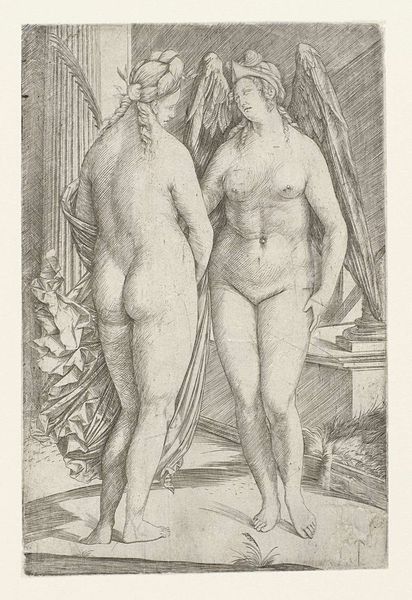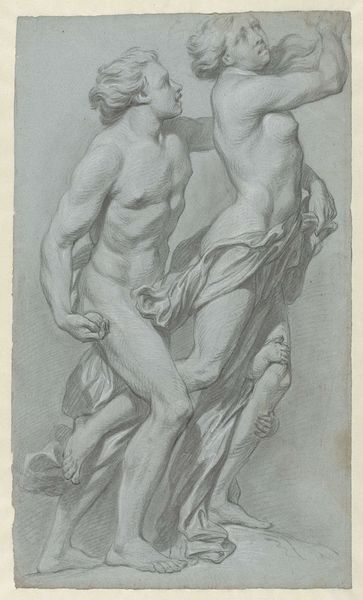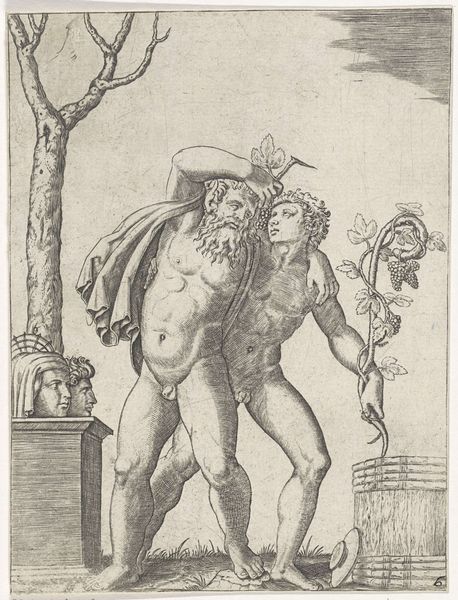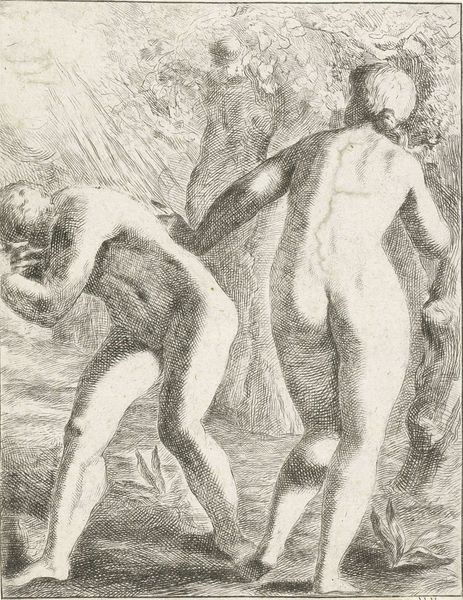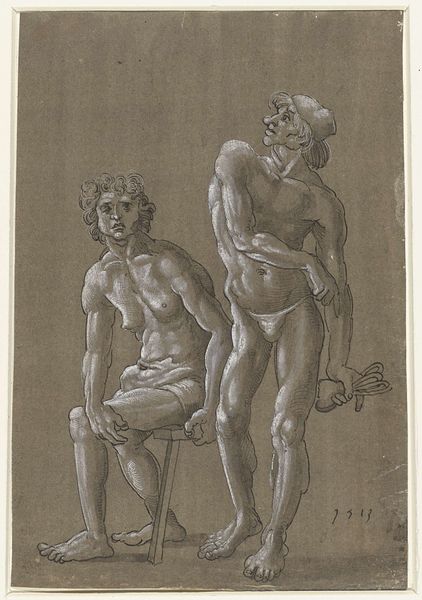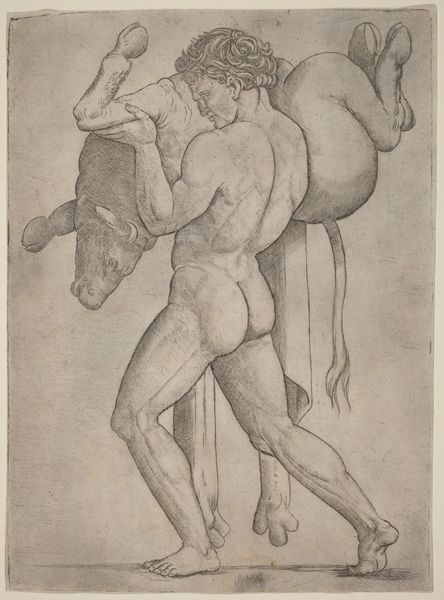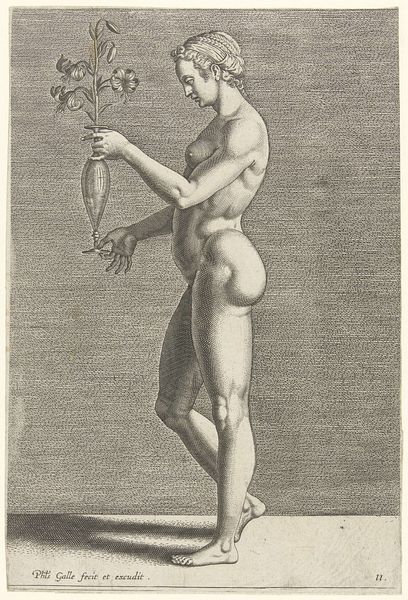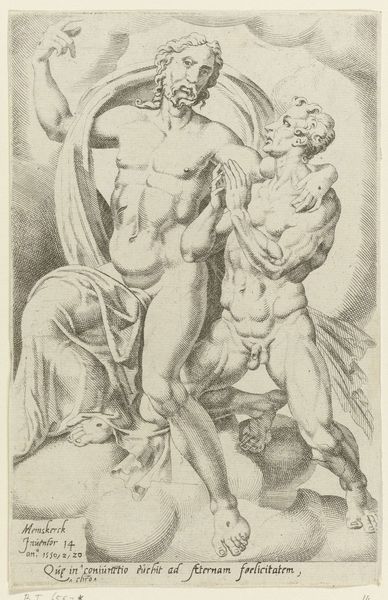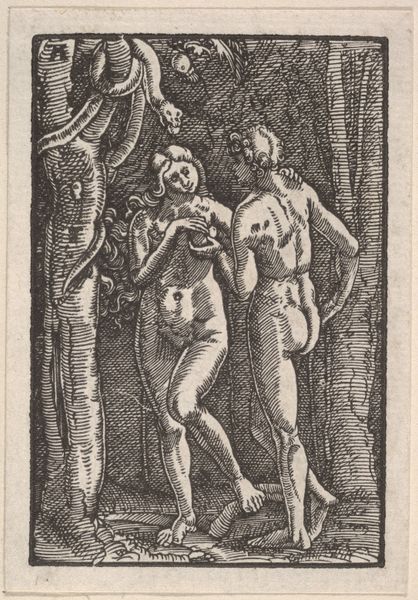
Dimensions: height 131 mm, width 84 mm
Copyright: Rijks Museum: Open Domain
Ludwig Krug created this engraving of two nude women, sometime between 1483 and 1532. They carry a skull topped by an hourglass, symbols of mortality and the passage of time, deeply rooted in the medieval concept of "memento mori". Such imagery isn't confined to the late Middle Ages; it echoes through the ages. We find similar stark reminders in ancient Roman art. Consider the tradition of carrying skulls during triumphs, a potent symbol of life's fleeting nature. In those instances, the skull was a reminder of mortality and the ephemeral nature of triumph, designed to temper pride. The "memento mori" motif evolved, appearing in various guises throughout history. It speaks to our collective consciousness, an acknowledgement of our mortality. This image isn't merely a representation of death; it is a symbol of life's inherent impermanence, intended to provoke reflection on our existence.
Comments
No comments
Be the first to comment and join the conversation on the ultimate creative platform.

